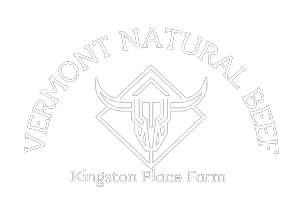A MUST READ!
There are many confusing claims printed on the labels of packaged beef. Those include Organic, Natural, Grass Fed, Grass Fed – Grain Finished, Prime, Choice, Select etc.
Our beef is sold under the “Natural” label which legally means no hormones, no antibiotics and minimally processed. We take this a step further with some additional perks!
What does our “Natural” mean for you? Our beef are also “Grass Fed”. From April until fall, when you get your beef, our animals are on lush green pasture 24/7! We rotate them through multiple paddocks allowing needed time for the grass to regrow. Many paddocks are clipped, or mowed, between early June and mid- July to control weeds and stimulate growth. The clippings are left on the ground to feed the flora and fauna in the soil as a natural fertilizer. Starting around August 1st we will begin visiting our groups daily with a treat. That treat consists of a mixture of either beet pulp and molasses or citrus pulp and molasses. Beet and citrus pulp are very close in nutritional profile. The switch from one to the other is driven only by market price. The amount the animals receive is about 5 to 8 percent of their total daily dry matter intake. All the rest comes from the grass.
Beet and citrus pulp are fiber sources that are by products from the sugar beet and citrus juice industries. They are not grains. However, the rumen of a mature bovine is specifically designed to digest fiber. There fibers are digested by the bacteria in the cow’s rumen and turned into sugar. In late season pasture the natural sugars in the grasses start to retreat to the roots in preparation for winter dormancy. This supplemental feeding serves two purposes: to provide additional sugars to help marble your beef and to help condition and calm the dispositions of the animals by becoming comfortable with human contact on a regular schedule. This serves to reduce stress, improves our ability to handle them in a calm way, therefore making better beef for you by minimizing adrenaline from the handling process. Again, if we did not do this, range animals usually become uncomfortable with humans from lack of contact and positive reinforcement. This stress generates tremendous adrenaline at the time of loading and adrenaline absolutely makes tough beef!
THE DIFFERENCE
Why not “Organic”? Most people don’t realize that “Organic” beef can be raised in confinement feedlots just like the feedlots of the commercial beef industry. Organic beef can be “fattened” just like commercial beef on corn and other grains. The stipulation is that the grains they are fed must be “certified organic” grains which are typically more than double the cost of commercial grains.
Personally, my biggest problem with raising beef under the “organic” label is the inability to effectively control parasites under the “organic” protocol. I believe one of the most important things I can do for the animal and the consumer is to make sure every animal is free from the burden of worms and other parasites. Parasites compromise the immune system and drain nutrients essential for health and growth. Both health and growth are very important to sustainability. Any animal exposed to pasture, no matter what the quality of the land and grass, will carry a burden of multiple parasites. These parasites life cycles must be controlled by adhering to a regular deworming schedule. I believe it is impossible to accomplish this when following the “organic” protocol.
USDA GRADE BEEF
Our beef is processed under USDA inspection, as is stamped on each package, but it is not subject to USDA grading. The USDA grades are Prime, Choice and Select with Prime being the best. Because we don’t market to restaurants and Hotels, our product does not need to be graded. The grading protocol considers marbling primarily but also size of the cut is taken into consideration. For this the beef producer has to target a minimum and uniform animal size to obtain a desirable grade from a larger steak. Because we are not constrained by this uniformity of animal size, we are able to offer smaller to larger beef to facilitate the budgets and appetites of our customers. As a general rule, excluding size, our beef would grade “choice”.
WHY MARBLED BEEF IS BETTER AND SOME BURGER FACTS
If you have ever had venison or venison hamburger, or even totally grass fed beef, you may have experienced a metallic after taste. That metallic after taste is present in ALL beef. The difference is that you only taste it in meat that does not have any fat marbling. The taste comes from the iron in the blood that is present in all meat. If there is a reasonable amount of fat or marbling in the meat the fat masks the metallic taste so you don’t detect it.
Our burger has enough fat to give it it’s great flavor. That flavor actually comes from the flavonoids in the grass they eat. The bigger benefit from our hamburger, that you cannot get from any commercial vendor or retail butcher shop, is uniformity. Your hamburger come only from your side of beef! Virtually all other hamburger, including commercial “grass fed”, is ground in batches that contain beef from multiple animals, often dozens. Our butcher actually cleans the grinder between sides of beef giving each customer a truly custom grind!
